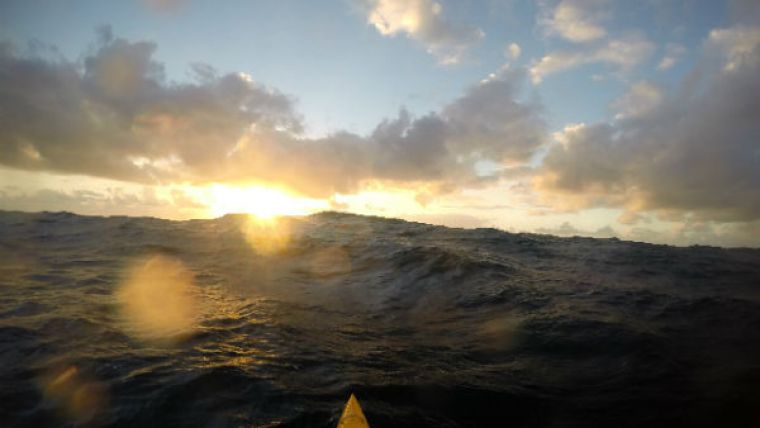AutoNaut Proves Herself in Atlantic Storm
A British wave-propelled boat, AutoNaut, has arrived back in the Isles of Scilly after a 13-day autonomous mission in which she weathered a 70mph Atlantic storm, while gathering scientific data. David Maclean, Director of MOST (Autonomous Vessels) Ltd which produces the AutoNaut, considered this mission to be a major test for AutoNaut. To have delivered on time, on budget and to a very tight schedule; and for the unmanned surface vessel (USV) to have gone straight out into the Atlantic and carried out her programme through a gale and a storm is, according to him, a really solid achievement.
The robustness and reliability of the AutoNaut has been proved in these storm conditions in conjunction with the National Oceanography Centre (NOC) MASSMO project, which involved seven other autonomous vessels gathering scientific data.
Wave propulsion means AutoNaut can provide very long endurance. She is designed for autonomous data gathering using a wide range of off-the-shelf sensors for science, the military, and offshore gas & oil and renewables industries.
On this voyage, AutoNaut Gordon, built for the National Oceanography Centre (NOC), was towing a 25m hydrophone array at a depth of 4m, as well as carrying an AirMar weather station, a pyronometer to measure sunlight, two cameras for seabird and marine litter survey work, and a WetLabs Triplet Puck measuring chlorophyll and other aspects of seawater quality.
Another First
This 13-day voyage was also a first ocean test for the NarcineArray, manufactured by J+S Ltd of Barnstaple and Aberdeen, UK. The 25m array is designed to listen for cetaceans as well as ships, and scientists involved in NOC’s MASSMO deployment also hope to get useful data as the array crossed tidal mixing fronts off the Isles of Scilly.
Alex Key, Business Development Manager for J+S Ltd, said that miniaturising the technology to suit this new evolving market, and enabling collection of data not previously available through traditional methods is the way forward in their ability to measure and monitor the ocean. The collaboration of the AutoNaut and NarcineArray has allowed this to happen. It is also positive proof that the miniaturised NarcineArray is 100% ruggedised, able to withstand rough and challenging ocean-going conditions.
AutoNaut also harvests solar energy at sea to power her electronics, and carries a methanol fuel cell for additional power when required.
The unmanned surface vessel (USV) uses motion from the ocean to propel herself, silently, with zero emissions. Its particular wave propulsion technology can be scaled from a 1 metre hull to a ship. The manufacturer sees zero emission power, using the energy of the waves to propel a vessel, as having a great future potential for the marine world.
NOC’s MASSMO project involved the mass deployment from the Scillies of five unmanned surface vessels and three underwater ‘gliders’. Equipped with a range of different sensors, this NOC fleet focused its attention on tidal mixing fronts off the Scillies and halfway out to the continental shelf break. These fronts, where waters mix, are areas rich in plankton, which attract fish and birds.
In a second phase of the MASSMO project in early November, AutoNaut Gordon will be deployed off Plymouth to monitor tagged fish. This phase of the research project is being run from the Marine Biological Association in Plymouth and will last a week. A small hydrophone will be towed to listen for signals from the fish tags, as a first stage in a 10-year project to study fish behaviour in the area.














